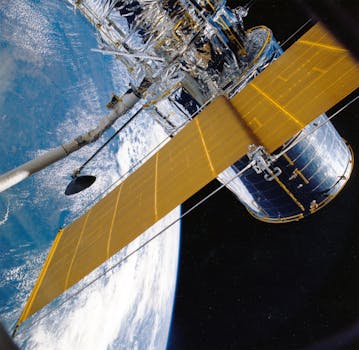LEO Satellites: The Future of Global Connectivity

LEO satellites, or Low Earth Orbit satellites, are a type of satellite that orbits the Earth at an altitude of around 160 to 2,000 kilometers. LEO satellites are becoming increasingly important in the field of telecommunications, as they offer a number of advantages over traditional geostationary satellites. One of the main benefits of LEO satellites is their ability to provide high-speed, low-latency connectivity. Because they are closer to the Earth’s surface, LEO satellites can offer faster data transfer rates and lower latency than geostationary satellites, which are located much farther away.
The use of LEO satellites is not limited to telecommunications. They are also used for a variety of other applications, including Earth observation, navigation, and scientific research. For example, LEO satellites can be used to collect high-resolution images of the Earth’s surface, which can be used for a variety of purposes, such as monitoring climate change, tracking natural disasters, and managing natural resources.
The Benefits of LEO Satellites

There are several benefits to using LEO satellites, including their ability to provide high-speed, low-latency connectivity, their relatively low cost compared to traditional satellites, and their ability to be easily launched and deployed. Additionally, LEO satellites can be used to provide connectivity to remote or underserved areas, where traditional telecommunications infrastructure may not be available.
The Challenges of LEO Satellites

Despite the many benefits of LEO satellites, there are also several challenges associated with their use. One of the main challenges is the need for a large number of satellites to be launched and deployed in order to provide global coverage. This can be a complex and expensive process, requiring significant resources and infrastructure. Additionally, LEO satellites must be designed to operate in a harsh environment, with extreme temperatures, radiation, and other forms of interference.
The Future of LEO Satellites

As technology continues to evolve, we can expect to see even more innovative applications of LEO satellites. For example, the use of LEO satellites for 5G and 6G networks, the integration of LEO satellites with other technologies, such as the Internet of Things (IoT) and artificial intelligence (AI), and the development of new types of LEO satellites, such as those that use advanced materials and propulsion systems.
In conclusion, LEO satellites are an exciting and rapidly evolving field, with the potential to transform the way we communicate and access the internet. With their ability to provide high-speed, low-latency connectivity, LEO satellites are poised to play a major role in the future of global connectivity.
See more:

